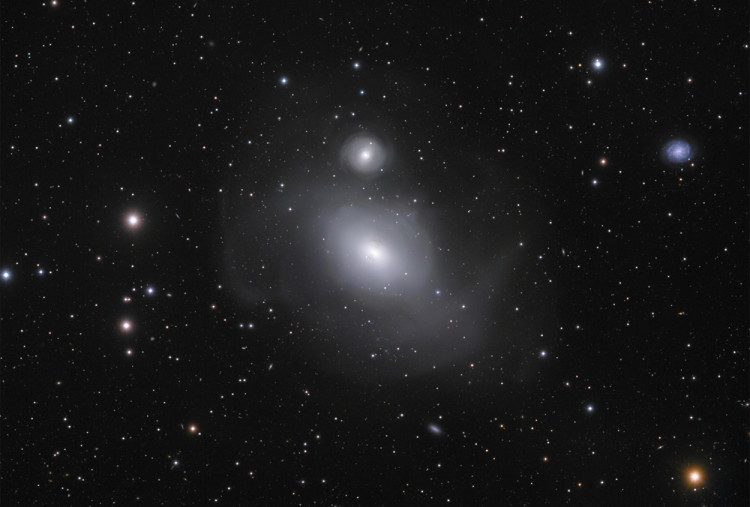Object: NGC 1316
A member of the Fornax Galaxy Group and lying about 60 million light-years away, NGC 1316 is a very interesting elliptical galaxy with a violent history. Astronomers estimate that around 3 billion years ago NGC 1316 cannibalized its nearby neighbors as evidenced by the peculiar dust lanes near the core and the faint tidal tails of countless stars surrounding the galaxy itself. NGC 1316 is also a bright radio source designated Fornax A, actually the fourth brightest in the night sky, with a supermassive black hole at its center fueled by material from its past and present galactic interactions. Nearby face-on spiral galaxy NGC 1317 (seen at 12 oíclock from NGC 1316) has, for the past 100 million years, been pulled into the grip of its hungry neighbor and is slowly being assimilated. Astronomers using the VLA in New Mexico have detected two large radio lobes, each about 600,000 light-years across, symmetrically located east and west of NGC 1316. These lobes are the result of material pulled into the black hole from NGC 1317, generating a high temperature plasma and blasting high-energy particles out in opposite directions. More information available at http://images.nrao.edu/501 for a National Radio Astronomy Observatory image of the radio lobes superimposed on an optical image of NGC 1316.
A beautiful face-on spiral galaxy, NGC 1310, is seen at the far right in this image. In the lower left is PGC 12706, an interacting galaxy system at magnitude 14.2. Scattered throughout the image are literally hundreds of faint galaxies ranging down to the 19th magnitude.
- Team: Dave Jurasevich and Howard Hedlund
- Filters: Tru-Balance LRGB Filters - Gen 2
- Exposure: L 34 x 1200 sec 1x1 bin; RGB 8 each x 900 sec, 1x1 bin
- Date: October and November 2015
- Software: CCDStack 2, Photoshop CS5


